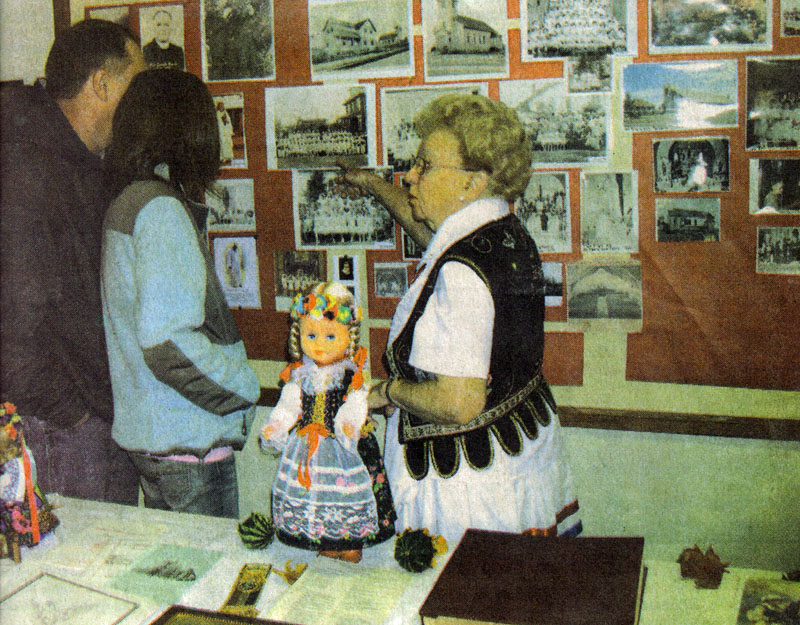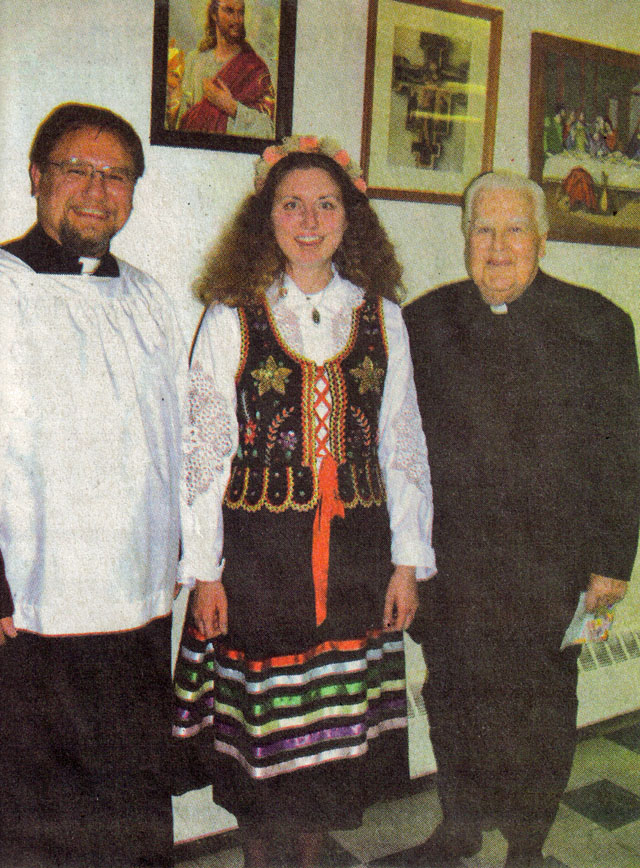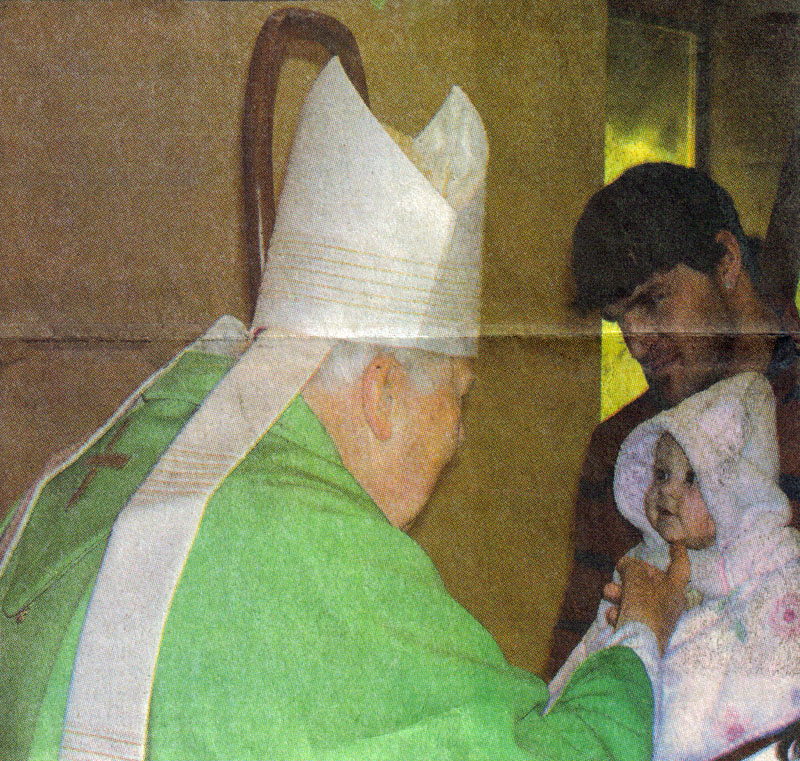Lublin Parish Marks 100th BirthdayThe Thorp Courier (Thorp, WI) |
 |
|
St. Stanislaus parishioner Lorraine Zawacki, right, shows her
granddaughter Elizabeth, and her son Bob, photos – on display for the
parish’s centennial – of large First Communion Classes dating back to
1916. This photo provided by the Superior Catholic Herald. Photos taken by A. M. Kelley |
|
It made all the sense in the world. On the day Lublin
parishioners celebrated their parish’s centennial; Bishop Emeritus
Raphael M. Fliss said in his homily that love of God presumes love of
neighbor. |
|
 |
|
St. Stanislaus pastor F. John Long, left, parishioner Erin Wojcik in traditional Polish dress, and Bishop Emeritus Raphael M. Fliss, pose on Oct. 26 in the church’s basement after the festive centennial meal. Coinciding with Priesthood Sunday, Long was honored for his 19 years as a priest, and Fliss, whose birthday was Oct. 25, was applauded and sung to, Polish-style: “Sto lat.” New Parishoner |
 |
|
Bishop Emeritus Raphael M. Fliss meets a new parishioner of St. Stanislaus parish, Kloe, who is held by her father Justin Kulesa, before the Lublin community’s centennial Mass on Oct. 26. |
**This Clark Co., WI Internet Library, ALHN & AHGP website is dedicated to the free sharing of information by researchers, local historians, genealogists and educators. Because of our non-profit status, submissions are not to be used for profiteering of any kind. Our representatives cannot accept gratuities beyond the basic expenses (i.e. postage, copying, courthouse or rental fees) for obtaining requested information. We reserve the right to ban the involvement of anyone who intentionally disregards these policies. Please show your appreciation for this database by Becoming a Clark County History Buff or making a contribution to our Support Fund and Perpetual Preservation Account to help keep this Clark Co., WI database freely available on the World Wide Web and free from commercial enterprise.
*** This copyrighted Clark Co., Wis. genealogy and history material is used by permission of the submitters. Contact us if anyone is using this data inappropriately. It may not be copied and posted to any commercial/.com genealogy sites such as Genealogy Trails, Family Tree Maker or the merged companies Ancestry.Com/RootsWeb/MyFamily or sold for profit.
This page is a part of the Clark County, WI Internet Library Project
Every submission is protected by the Digital Millennium Copyright Act of 1998.
~~The Clark Co., Wisconsin History Buffs maintain these pages in support of Free On-line History & Genealogy~~